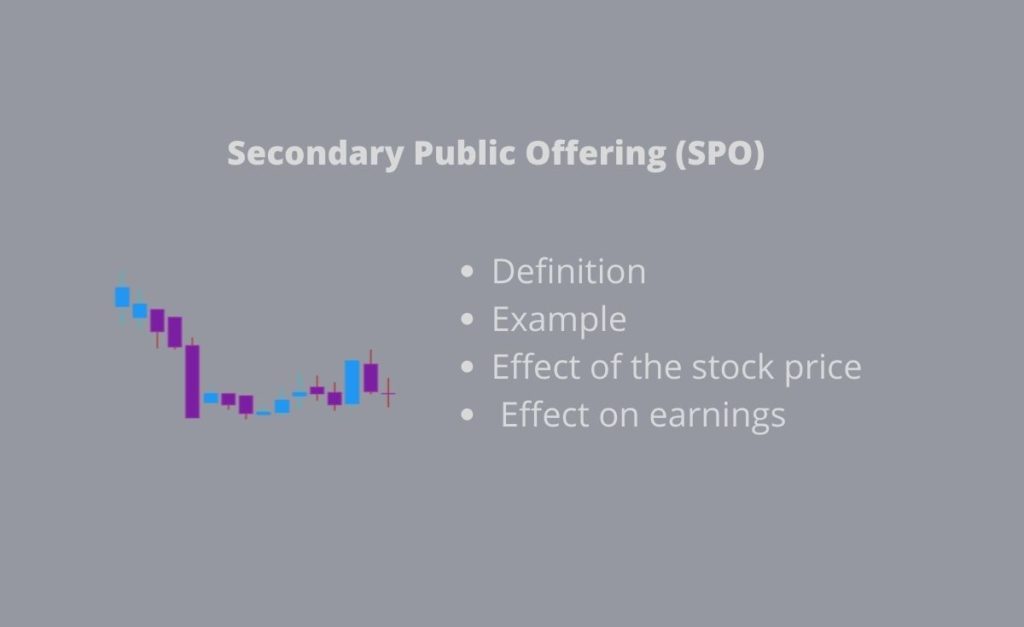What is a secondary offering?
A secondary offering is the sale of additional shares to the public after the company’s IPO. Although there are many reasons a secondary offering can be made, the main reason for a secondary offering is to raise money. Yes, there are times when a publicly-traded company runs out of money or does not have enough money to cover its expansions and other projects. This forces the management team to sell more shares to the public and raise needed capital.
For example, a publicly-traded company can realize that in order to stay competitive, it must make particular investments without abandoning its ongoing product development. If the company does not have enough money to take care of the research and investment; it will raise more money from the public. This offering is known as a secondary offering.
A secondary offering can also happen when a major shareholder sells his/her shares. This type of sales is known as a non-dilutive offering, according to Investopedia. In this case, the proceeds will go to the individual or entity that sold shares instead of the company. The sale of privately held shares adds liquidity to the market.
If a company offers new shares to the public, the sale will be a dilutive offering. This is because adding more shares in the market will reduce the percentage of share ownership for existing shareholders.
Dilutive offering
The dilutive offering is an offering that happens when a company creates brand new shares and offers them to the market. Adding more shares in the market will reduce the earnings per share(EPS) for the existing shareholders. In addition, the current shareholders will have less percentage ownership in the company.
if you owned 10% of outstanding shares and the company offered 25% more shares in the market, your new ownership will no longer be 10%.
Example: Let’s assume that the company had 1,000,000 shares outstanding and you owned 10% (100,000 shares). If the company offers 500,000 more shares, the new total shares outstanding will be 1,5000,000 shares. Your new ownership will be 6.67%. This means that your earnings per share will go lower since the number of shares went up.
Let’s illustrate this scenario and see how your earnings will be affected (we will use numbers from the above example). Let’s assume that the company generates $2,000,000 in earnings. The earnings per share, in this case, will be $2,000,000/1,000,000 shares = $2 per share.
That is, each shareholder will receive $2 for every share they own in the company.
Your total earnings before the secondary offering was 100,000 shares (10%)x2$ = $200,000.
How will the secondary offering affect these earnings?
After the secondary offering, the new EPS = $2,000,000/1,500,000 shares = $1.3 per share. By increasing the number of shares, the EPS went down.
Your total earnings = 100,000 shares x$1.3 = $130,000.
You can clearly see that you are no longer making the same amount in returns.
The impact of secondary offering on stock price
Have you been wondering why most stocks plunge every time a company announces a secondary public offering? The impact of offering on the stock price depends on the type of offering being performed. That is if the offering is non-dilutive, the share price will not be affected.
For example, if a shareholder sells privately owned shares, the total number of shares available will not change. Shares will only move from one owner to another(s).
However, it is a common practice for insiders to sell all or some of their shares, especially after the lock-up period.
Insider sales can send a mixed signal to investors. When insiders dump their shares, it can indicate that the company is overvalued or insiders are expecting fewer revenues which could affect the stock price. For this reason, a wave of non-dilutive offerings can cause a huge supply of stock in the market (after the lock-up period). Hence causing a decrease in the share price.
Some investors consider a secondary offering as a bad signal for some businesses. If a management team is forced to raise more capital through a secondary offering, it may indicate that the company is struggling to stay afloat. This happens especially for companies that must raise more money in order to continue their operations. As a result, many investors can dump the stock and add more pressure on the sell-off.
The effect of dilutive offering
A dilutive secondary offering reduces the stock price. Let’s assume that the company in our example was trading at $10 per share before the secondary offering. At the same time, it had a EPS of $2. This would give us a P/E ratio of $10/2 = $5. In order to maintain the pre-offering P/E ratio, the price must fall. That is the new price = Original P/E ratio X new EPS = $5x$1.3 = $6.5 per share. In other words, after the offering, the stock will trade at $6.5 per share.
Furthermore, the price at which shares are being sold can influence the percentage drop of stock. For example, HOFV was trading at $2.49 and sold its shares at $1.39 per share. This was a huge discount. The price ended up tanking more than 65% from the previous closing day of $2.49. Please, refer to the chart above for more details.









